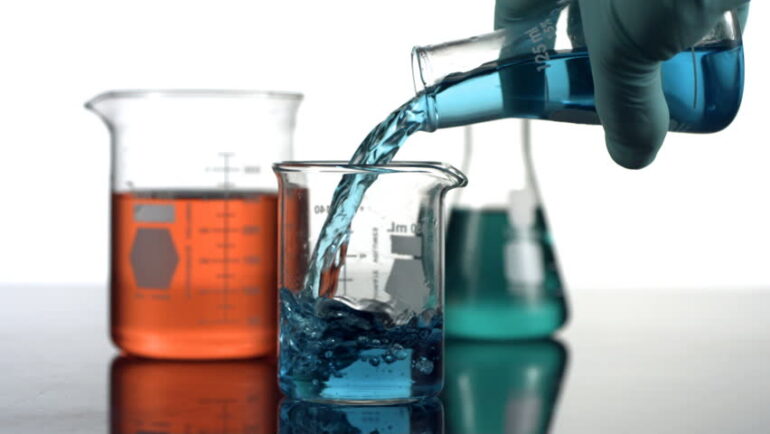Technology is a beast that marches ever forward, and sometimes it seems like it progresses in fits and starts. Nowhere is that pattern more clear than right now in the reef aquarium hobby where a handful of new products are pushing the envelope for what is possible in reef tanks.
It’s actually a very exciting time to be a reef aquarium reporter as there are so many new product categories to keep an eye on. We know that it can get overwhelming to see so many new products announced and released, from so many different companies.
Alkatronic Is The New KH Alkalinity Controller From Focustronic
So today we’re kicking off a mini series that will give you the audience a cheat sheet to all the new advancements happening in the reef world. The opening salvo of this 2017 Reefing Cliff Notes is an overview of the bewildering array of new machines promising to constantly test and monitor Alkalinity and other parameters.
Alkalinity testing machines have existed for scientific and industrial use for many decades. it’s only in the last couple of years that new and smaller versions of this tech has been created which is smaller, cheaper and more practical to use for home aquariums. The basic method of testing alkalinity involves adding a certain amount of acid until the aquarium sample reaches a neutral pH, just the way we test it by hand.
However there’s two ways to determine if the pH of the test water has been neutralized, using a colorimeter to see the color change of a pH indicator solution, or using a pH probe to directly measure it. One of these methods essentially recreates how we do it manually and is familiar, requires a special reagent, while the other is scientifically more precise as it can register pH in finer detail.
KH Director Is GHL’s Entry Into The Alkalinity Monitor Frontier
For aquarium purposes both methods are more than capable enough to determine when the water sample is pH neutral, and the subsequent alkalinity to which it corresponds. The colorimetric approach will be a little more reliant on good and available reagents for a given machine, while the pH probe method will require the use and regular calibration of the pH probe.
It’s much too soon to tell whether one of these methods will work out better in practice but for now, it appears that both methods are more than sufficient for determining a neutral pH for alkalinity testing and monitoring. However there is one company, Step Ahead Innovations, which is on the cusp of delivering the MindStream monitor which determines alkalinity in a somewhat different way.
Instead of using a reagent, the MindStream uses photoreactive ‘paper’ for all their parameters, including pH and CO2. There is a close relationship between pH, alkalinity and carbon dioxide in seawater and if you know two of them, you can calculate the third. However instead of measuring total alkalinity (Carbonate, Bicarbonate & Borate), the MindStream will only report on carbonate alkalinity, which is the bulk of total KH, and the element which corals actually use to build their calcium carbonate skeletons.
New KH Guardian Monitor Tracks Alkalinity For Half The Price!
Besides indirectly calculating carbonate alkalinity, the method by which the MindStream makes its measurements is independent of sampling rate. What we mean by this is that for every KH test performed with the KH Lab, KH Director KH Guardian and Alkatronic, a certain amount of acid or reagent will be consumed, and a rough estimate is that daily sampling will cost probably around $10 per month. However with the MindStream the tests will be performed every 15 minutes so you’ll be able to see much faster changes in alkalinity without using up that $35 monthly disc.
It’s way too soon to declare any of these machines or approaches better or worse, but there are some clear distinctions among this group of Alkalinity monitors. Some of them also build in dosing functions to control alkalinity, but they all focus on this very important parameter, sometimes in conjunction with dosing pumps to move samples, reagents and waste water to where it needs to go.
Answers to the top 10 questions about the MindStream aquarium monitor
The KH Guardian has done a pretty decent job of paving the way for all the others coming after it, and for $1200 it better work pretty darn flawlessly. The other KH monitors will all retail for between $800 to $1000 which are differentiated mostly by their secondary features since they all will give you a pretty accurate measurement of alkalinity.
My personal thoughts on this KH monitoring race are this: KH is literally the easiest test to do after salinity and temperature, and unless you have a slam packed tank full of stony corals, or a commercial coral facility, I’d rather just do frequent manual tests than plunk down a grand on the first wave of these KH machines. The additional features like the extra dosing channels of the PacificSun Kore 7th, or other parameters of the MindStream, are what would be more compelling to my personal school of coral reefing.
It’s a very exciting time for new and cutting edge reef gear, we’ve probably not seen the last of the new products from this category and no doubt the next generation will be better, smaller and more affordable. Tune back in tomorrow when we’ll discuss the new wave of filter rolls for the aquarium hobby.



